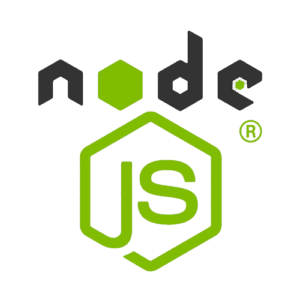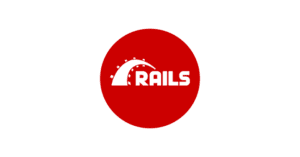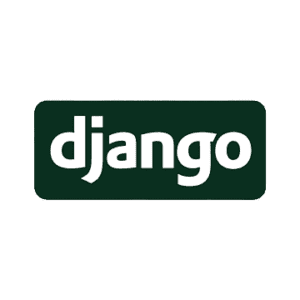Software as a Service (SaaS)
A Software-as-a-Service (SaaS) application is a software delivery model where the application is hosted and managed by a third-party provider and made available to customers over the internet. SaaS applications are typically accessed through a web browser, although some may also offer mobile apps or desktop clients.
The key feature of SaaS applications is that they are hosted in the cloud. It means that customers do not need to install or maintain any software on their own servers or devices. Instead, they simply pay a subscription fee to access the software over the internet, typically on a per-user or per-month basis.
SaaS applications can range from simple productivity tools, such as email and document management software, to more complex applications, such as customer relationship management (CRM) systems, enterprise resource planning (ERP) software, and project management tools.
One of the key benefits of SaaS applications is that they are typically more affordable and accessible than traditional software. Customers do not need to make any upfront investments in hardware or software, and they can easily scale up or down as needed, depending on their usage requirements. Additionally, because the application is hosted and managed by a third-party provider, customers do not need to worry about maintenance or upgrades. It saves their time and money.
However, there are also some potential drawbacks to SaaS applications. Customers may be limited in terms of customization and integration options, as they are reliant on the provider’s infrastructure and APIs. Additionally, customers may be concerned about data privacy and security, as they are entrusting their data to a third-party provider.
Overall, SaaS applications offer a flexible and affordable way for businesses and individuals to access the software they need to get their work done. And it is also without the hassle of traditional software installation and maintenance.
Features of SaaS:
- Centralized hosting of software
- Accessible through web browsers or mobile apps
- Subscription-based pricing
- Automatic updates and maintenance
- Scalability to meet changing needs.
- No upfront investment in hardware or software
- Easy and quick deployment
- Accessible from anywhere with an internet connection
- Lower total cost of ownership over time
- Hosted by a third-party provider
Challenges and Risks of SaaS:
- Dependence on the reliability and security of the provider
- Limited customization and integration options
- Concerns around data privacy and security
- Difficulty in migrating data to another platform
Security and Privacy in SaaS:
- SaaS providers are responsible for ensuring the security and privacy of their customers’ data
- Providers must implement strong security measures, such as encryption, firewalls, and access controls
- Providers must comply with data protection regulations, such as GDPR and HIPAA, if they handle sensitive data
- Customers should carefully review the provider’s security and privacy policies before signing up for a service to ensure they meet their specific needs and requirements.
Best SaaS Framework
There are several popular backend frameworks that are widely used for building SaaS applications, including:
NODE JS:

Node.js is considered one of the best backend frameworks for creating SaaS-based applications due to several key factors:
Key Factors:
- Asynchronous, event-driven architecture: Node.js is built on an asynchronous, event-driven architecture, which allows it to handle large numbers of concurrent connections with ease. This makes it ideal for building SaaS applications that require real-time data updates and communication between multiple clients.
- High performance and scalability: Node.js is built on top of Google’s V8 JavaScript engine, which offers fast performance and scalability. Additionally, Node.js is designed to be lightweight and efficient, making it a good choice for building high-performance, scalable SaaS applications.
- Large and active community: Node.js has a large and active community of developers, which means there are plenty of resources available for learning and troubleshooting. Additionally, there are many third-party libraries and tools available for building SaaS applications with Node.js.
- Cross-platform support: Node.js is designed to run on multiple platforms, including Windows, Linux, and macOS, which makes it a good choice for building cross-platform SaaS applications.
Drawbacks:
However, there are also some potential drawbacks to consider when building a SaaS application with Node.js:
- Single-threaded nature: Node.js is single-threaded. It means that it may not be the best choice for applications that require heavy computation or I/O operations. However, Node.js does support multi-process clustering, which can help mitigate this issue.
- Lack of built-in security features: While Node.js includes some built-in security features, such as TLS/SSL support and HTTP authentication, it does not have the same level of built-in security features as some other backend frameworks. Developers must be diligent in implementing secure coding practices and properly configuring security features to ensure the security of their SaaS applications.
- Complexity of asynchronous programming: Asynchronous programming can be more complex than traditional synchronous programming, particularly for developers who are not familiar with the event-driven programming model used by Node.js. However, there are many resources available for learning asynchronous programming with Node.js.
Ruby on Rails:

Ruby on Rails is a popular backend framework for building SaaS-based applications due to several key factors:
Key Factors:
- Convention over configuration: Ruby on Rails is designed with a “convention over configuration” philosophy, which means that developers can get started quickly without having to spend a lot of time configuring their application. This makes it a good choice for building SaaS applications quickly and efficiently.
- Rapid development: Ruby on Rails is known for its ability to facilitate rapid development. It’s built-in scaffolding, code generation, and automatic routing make it easy for developers to create new features and functionality quickly.
- Large and active community: Ruby on Rails has a large and active community of developers, which means there are plenty of resources available for learning and troubleshooting. Additionally, there are many third-party gems (libraries) available for building SaaS applications with Ruby on Rails.
- Clean and readable code: Ruby on Rails is built on the Ruby programming language, which is known for its clean and readable syntax. This makes it easy for developers to write and maintain code, which is important for building scalable and maintainable SaaS applications.
- Built-in security features: Ruby on Rails includes several built-in security features, such as cross-site scripting (XSS) protection and SQL injection prevention. This makes it easier for developers to build secure SaaS applications.
Drawbacks:
However, there are also some potential drawbacks to consider when building a SaaS application with Ruby on Rails:
- Performance: While Ruby on Rails is generally fast and scalable, it may not be the best choice for applications that require extremely high performance or real-time communication. This is because Ruby on Rails is built on an interpreted language, which can be slower than compiled languages like C++ or Java.
- Learning curve: Ruby on Rails has a learning curve, particularly for developers who are not familiar with the Ruby programming language or the framework’s conventions. However, there are many resources available for learning Ruby on Rails, and its conventions are designed to make it easier for developers to get started quickly.
- Difficulty in scaling horizontally: Scaling horizontally can be challenging with Ruby on Rails, as it requires replicating the entire application stack on each node. However, there are several tools and techniques available for scaling Ruby on Rails applications horizontally.
Django:

Django is a popular backend web framework for building SaaS-based applications, and here are some reasons why:
Key Factors:
- Rapid development: Like Ruby on Rails, Django emphasizes rapid development and follows the “Don’t Repeat Yourself” (DRY) principle, which reduces code duplication and improves development speed.
- Built-in admin interface: Django comes with a built-in admin interface. It makes it easy to manage data, users, and authentication for SaaS applications.
- Scalability: Django is highly scalable and can handle a large amount of traffic and data. These features make it ideal for SaaS applications that need to grow quickly.
- Security: Django has several built-in security features. It includes cross-site request forgery (CSRF) protection and user authentication, making it a secure choice for building SaaS applications.
- Versatility: Django is a versatile framework that can be used to build a wide range of applications. Those applications include content management systems, e-commerce platforms, and social networking sites.
Drawbacks:
However, there are also some potential drawbacks to consider when building a SaaS application with Django:
- Complexity: While Django is a powerful framework, it can be complex to learn, especially for developers who are not familiar with Python. Additionally, its many features and options can make it difficult to choose the right approach for a specific problem.
- Performance: Like Ruby on Rails, Django is an interpreted language. It can be slower than compiled languages like C++ or Java. While Django is designed to be highly scalable, it may not be the best choice for applications that require real-time communication or high performance.
- Limited flexibility: Django has a strong emphasis on convention over configuration, which can limit its flexibility in some cases. Developers may need to work within the framework’s constraints, which may not always be ideal for a specific application.
Conclusion:
Ultimately, the best backend framework for your SaaS application will depend on your specific needs. And also, the expertise of your development team. It’s important to carefully evaluate each option. And choose the one that best meets your needs and fits within your project’s constraints.
Please share your kind feedback in the comments section. For any query, feel free to Contact us or email us on [email protected]
March 17, 2023 | Written by: Bilal Ul Haque




